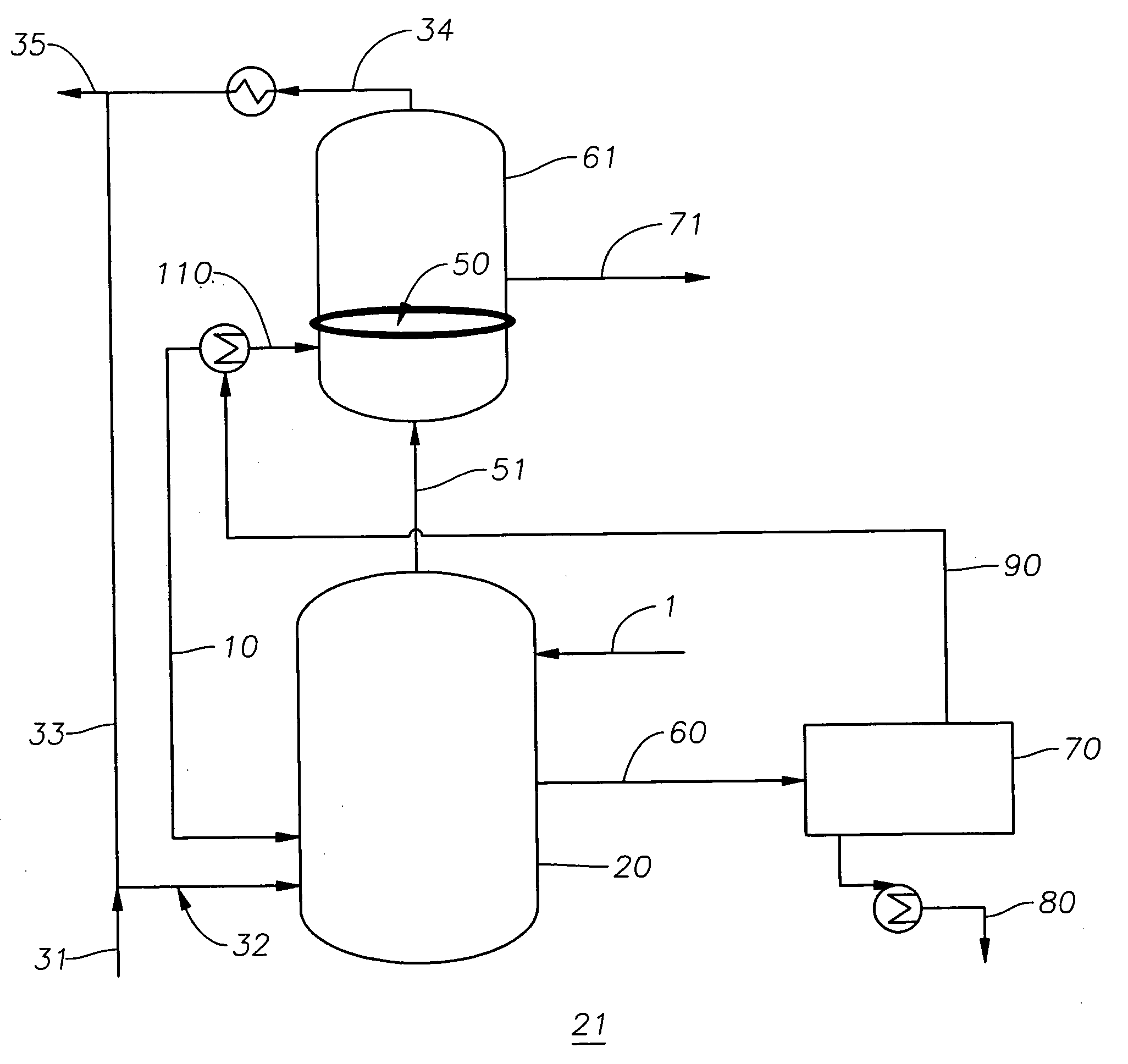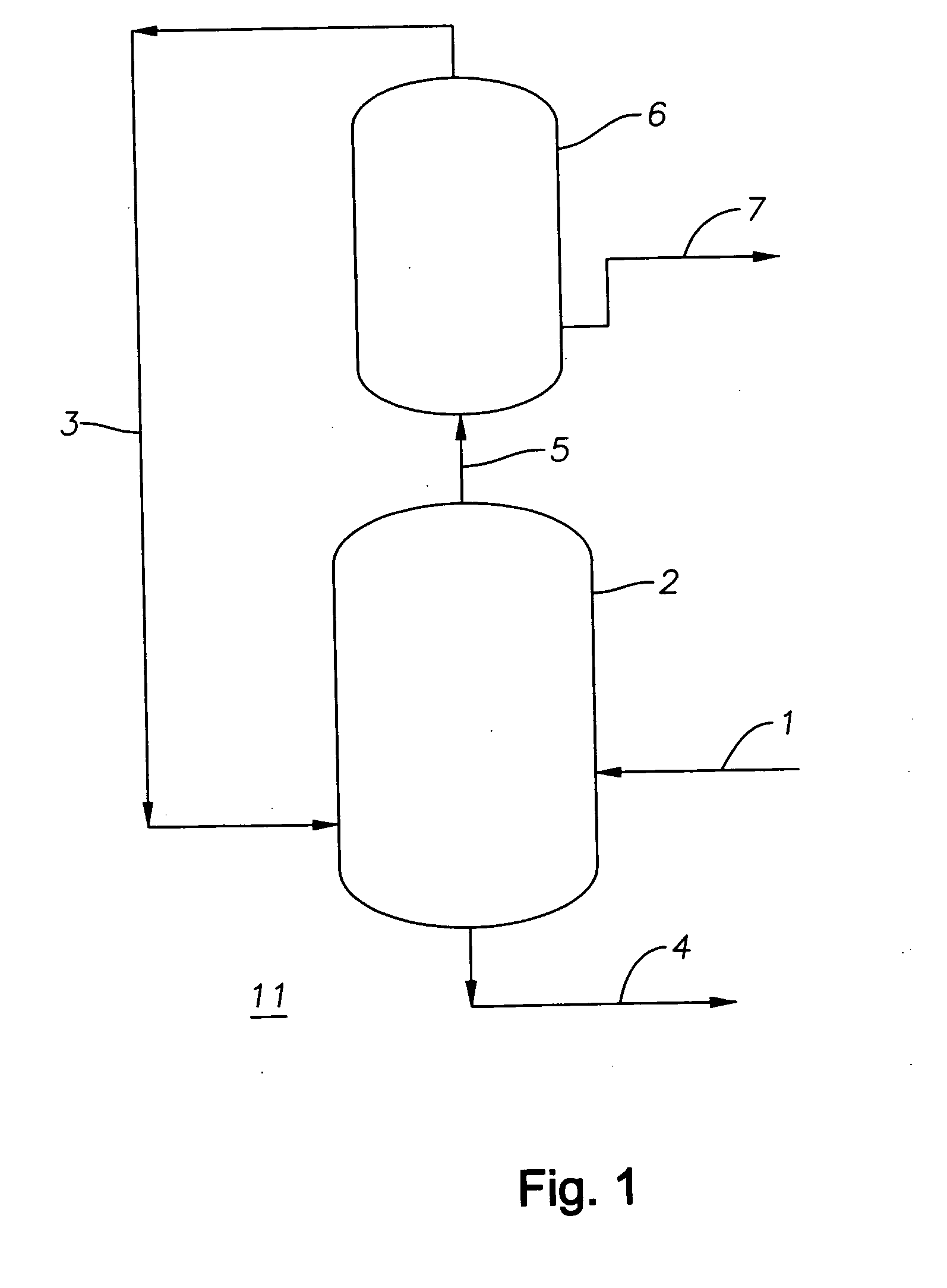Process for upgrading tar
a technology of tar and process, applied in the field of tar upgrading, can solve the problems of reducing the amount of valuable products such as light olefins, sct continues to be generated in quantities beyond the capacity of current technology to be efficiently utilized, and the sct tends to be incompatible with s
- Summary
- Abstract
- Description
- Claims
- Application Information
AI Technical Summary
Benefits of technology
Problems solved by technology
Method used
Image
Examples
first embodiment
[0041]FIG. 1 is a simplified schematic flow diagram of the invention, showing a system 11 useful in a process for deasphalting tar. In FIG. 1, a feedstream comprising tar is provided through conduit 1 to the solvent deasphalter 2 from the primary fractionator downstream of a pyrolysis furnace.
[0042]The pyrolysis furnace along with the associated primary fractionator is not shown in the drawing but may be conventional or preferably the pyrolysis furnace has an integrated vapor / liquid separator, as described in U.S. Patent Applications 2004 / 0004022; 20040004027; 2004 / 0004028; 2005 / 0209495; 2005 / 0261530; 2005 / 0261531; 2005 / 0261532; 2005 / 0261533; 2005 / 0261534; 2005 / 0261535; 2005 / 0261536; 2005 / 0261537; and 2005 / 0261538; and in U.S. Pat. No. 6,632,351.
[0043]The feedstream provided through 1 is typically the bottoms product of the primary fractionator of a pyrolysis furnace, having a boiling point of 550° F.+ and including a fraction having a boiling point of 1000° F.+.
[0044]In the solvent...
second embodiment
[0047]A more preferred embodiment is shown in FIG. 2, which is a simplified schematic flow diagram of the invention. In this embodiment, the process for deasphalting tar, using the deasphalting system 21, is integrated with the front end of at least one pyrolysis furnace (not shown in the figure) so that at least a portion of the feedstream to the pyrolysis furnace is used as the fluid in the fluid or solvent deasphalter and, after recovery in the said recovery facilities, may then be sent to the pyrolysis furnace such as by rejoining the fluid with the feedstream to the pyrolysis furnace, as discussed with respect to FIG. 2, to generate, by way of example, light olefins.
[0048]In FIG. 2, a slipstream (or portion) is taken off in conduit 32 from a feedstream to one or more pyrolysis furnace(s) (not shown) fed by conduit 35, and used as solvent in the solvent deasphalter apparatus 20, also fed with the bottoms product comprising tar through conduit 1 (as in FIG. 1) from one or more pr...
PUM
| Property | Measurement | Unit |
|---|---|---|
| wt % | aaaaa | aaaaa |
| temperatures | aaaaa | aaaaa |
| boiling point | aaaaa | aaaaa |
Abstract
Description
Claims
Application Information
 Login to View More
Login to View More - R&D
- Intellectual Property
- Life Sciences
- Materials
- Tech Scout
- Unparalleled Data Quality
- Higher Quality Content
- 60% Fewer Hallucinations
Browse by: Latest US Patents, China's latest patents, Technical Efficacy Thesaurus, Application Domain, Technology Topic, Popular Technical Reports.
© 2025 PatSnap. All rights reserved.Legal|Privacy policy|Modern Slavery Act Transparency Statement|Sitemap|About US| Contact US: help@patsnap.com



